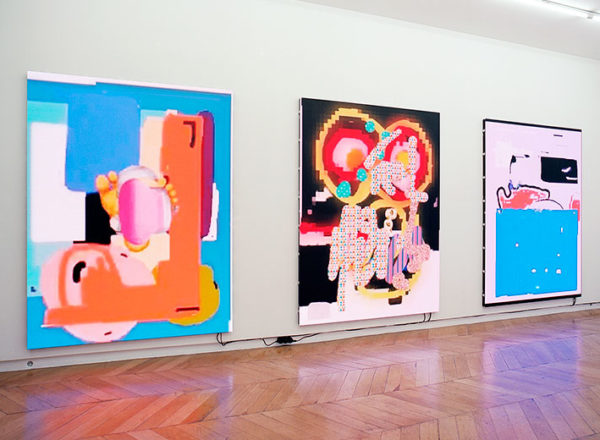


GIFs, variable dimensions and duration
Linus Bill (b. 1982) and Adrien Horni (b. 1982) live and work in Biel, Switzerland. Since 2011, following studies in photography for the former and visual arts for the latter, alongside their respective and individual artistic practices, the two artists developed a body of work as a duo, under the name Linus Bill + Adrien Horni.
During the lockdown in the first half of 2020, the duo set an objective to produce and share five GIFs per day, transforming their solitary screen time into a creative collaboration. For a number of months, they exchanged files via the messaging service WhatsApp, consisting of colourful collages made from digital drawings, images taken from the Internet, emojis and photos taken using the camera on their smartphones.
GIFs presents five hundred and twenty-two GIFs from the three thousand or so produced by the artists in their co-creative, remote collaboration. These images have been dramatically enlarged and projected onto three LED screens whose proportions and verticality evoke over-sized and ultra-luminous touch screens, in a continuous flow that seems infinite, and is defined by a random algorithm.
Through the monumental format and the variety of styles and subjects explored, GIFs undoubtedly makes reference to contemporary painting and those practices qualified as “post-Internet”. In the artists’ own words, the images form “moving tableaux”, in which free figures in bright colours, evoke not only gestural painting but also an ensemble of current graphic creations, and are interwoven with motifs and characters derived from digital pop culture.
Via this original approach, at once the product of the digital dependence characteristic of our era, and at the same time an inherent criticism of it, Linus Bill + Adrien Horni invite us to question the conditions surrounding the production of these digital images that saturate our daily lives, as well as their storage, management and transportation. At the same time, the artists underline the expressive potential and new pictorial possibilities offered by the proliferation of such images.